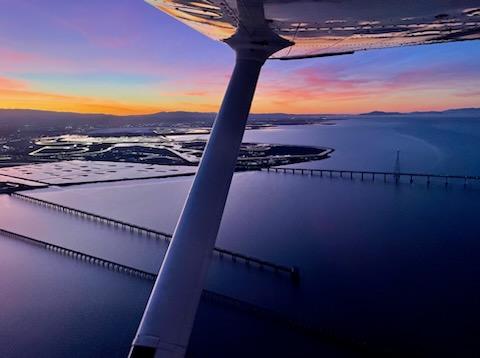
In the world of aviation, VFR, or Visual Flight Rules, is a set of regulations under which a pilot operates an aircraft in weather conditions clear enough to see and avoid obstacles and other aircraft. VFR flying relies heavily on visual cues rather than solely on instruments, making it a cornerstone of general aviation.
VFR is primarily used when the weather allows for good visibility, defined as Visual Meteorological Conditions (VMC). Under these conditions, pilots can maintain control of their aircraft and navigate safely by looking outside the cockpit.
The key aspects of VFR include:
Weather Requirements: Pilots must adhere to specific minimum visibility and cloud clearance requirements, which vary depending on the airspace classification. For instance, in Class E airspace below 10,000 feet, a pilot needs at least 3 statute miles of visibility and must remain 500 feet below, 1,000 feet above, and 2,000 feet horizontally from clouds.
Navigation: Pilots rely on visual landmarks, charts, and sometimes GPS for navigation, rather than depending entirely on air traffic control or instrument-based systems.
Aircraft Equipment: VFR operations generally require fewer onboard instruments compared to instrument flight rules (IFR). However, a functioning altimeter, airspeed indicator, compass, and communications equipment are typically necessary.
Pilot Responsibilities: Under VFR, the pilot assumes responsibility for avoiding other aircraft, terrain, and obstacles. This is referred to as "see and avoid."
Airspace regulations dictate where VFR pilots can operate and under what conditions. Controlled airspace (like Class B, C, or D) often requires VFR pilots to establish radio communication with air traffic control (ATC) before entering. In contrast, in uncontrolled airspace, pilots have more freedom but must rely entirely on visual scanning and self-announcements to maintain situational awareness.
While not mandatory for all VFR flights, filing a VFR flight plan with a Flight Service Station (FSS) is a good practice, especially for cross-country flights. This provides a record of the intended route and can assist search-and-rescue efforts if needed. Unlike IFR, however, ATC does not actively monitor VFR flights.
Imagine a small aircraft taking off from a rural airport on a sunny day. The pilot visually identifies landmarks like rivers, highways, and towns to navigate toward the destination. Weather conditions meet VFR minimums—visibility is 10 miles, and there are no clouds below 5,000 feet. The pilot maintains communication with ATC when flying through controlled airspace but retains autonomy in navigation and collision avoidance.
VFR simplifies flight operations for pilots in good weather and is often the first type of flying taught during pilot training. It provides freedom and flexibility, making it ideal for short trips and scenic flights. However, VFR also demands vigilance and situational awareness to ensure safety.
By understanding and adhering to VFR, pilots can safely enjoy the skies while respecting airspace regulations and maintaining essential safety standards.
Back to Articles